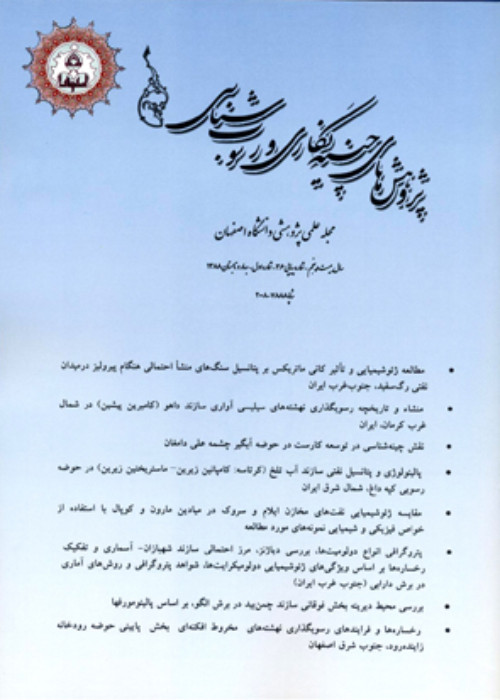Palaeoenvironment reconstruction, diagenetic overprint and geochemistry of the Upper Cretaceous Sarvak Formation in the north of Dezful Embayment, south-west of Iran
The Sarvak Formation, with a total thickness of 1566 m and major limestone lithology in the Ahvaz and Mansouri oil fields, is studied to determine its palaeoenvironment, diagenetic overprint and geochemistry. In the studied wells, the formation conformably overlies the Kazhdumi Formation and is overlain by the Ilam Formation. The petrographical studies led to identifying twelve facies precipitated in four major sub-environments, including inner-, middle-, and outer ramp and an intra-shelf basin on a homoclinal ramp-type setting. Dissolution, compaction, and cementation are the main diagenetic alterations that changed the primary chemical composition and the reservoir property of the Sarvak Formation. These diagenetic processes occurred in phreatic marine, meteoric, and burial realms. Sedimentary geochemistry of major and trace elements, including Ca, Mg, Fe, Mn, and Sr, along with O and C stable isotopes, reveal aragonite as the original carbonate mineralogy of the Sarvak Formation. The depositional environment in the lower Sarvak with the predominant shallow open marine and stratigraphic succession with no evidence of exposure, change to stratigraphic succession with more shallow sub-environments (lagoon and bioclastic-shoal), and the evidence of exposure such as cementation and extensive dissolution, which led to depletion in Sr, δ18O, and δ13C and enrichment in Fe and Mn during sea level fall in the inner ramp microfacies. The Fe and Mn cross-plot with a positive trend shows the effects of diagenetic phases in minor phreatic marine and mainly meteoric realm, all confirmed by petrography. The Sr/Ca ratio has the most correlation to the modern tropical warm-water shallow marine that could confirm the primary aragonite mineralogy; which is supported by the predominance of carbonate mud in the identified facies, primary isopachous fibrous marine cements, and extensive dissolution evidence. The cross-plot of Fe versus Sr and Mn versus Sr/Mn ratio suggests deposition in mainly an oxygenation state that experienced low to high water/rock interaction during different depositional sequences. The δ18O and δ13C co-variation and their comparison with the other fields of the Sarvak conducted in different regions show precipitation in an isotopic equilibrium in the carbonates with the Upper Cretaceous seawater, since calculating salinity (Z=130) and temperature (T= 26°C) of the Sarvak Formation confirm the above statement.
- حق عضویت دریافتی صرف حمایت از نشریات عضو و نگهداری، تکمیل و توسعه مگیران میشود.
- پرداخت حق اشتراک و دانلود مقالات اجازه بازنشر آن در سایر رسانههای چاپی و دیجیتال را به کاربر نمیدهد.


